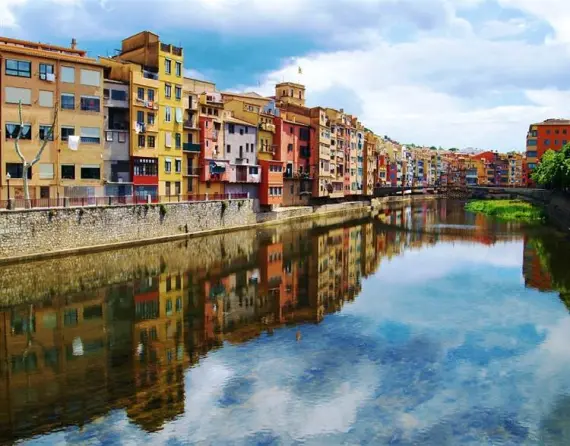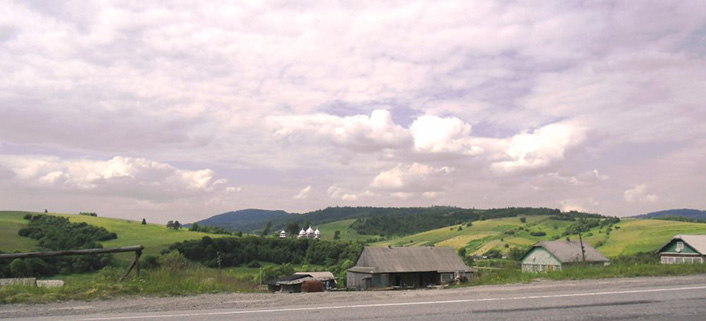How to travel from GIRONA to VALKY?
GIRONA

Girona is located in the northeast of Spain, at the foot of the Catalan Mountains, about 33 kilometers west of the Mediterranean coast. It is located in Catalonia, 80 kilometers from its capital, Barcelona, and is a small, atmospheric city full of historic architecture.
What interesting things does Girona offer for visitors? It's best to start your sightseeing from the old town, surrounded by walls that still remember Roman times. The focal point there is the Cathedral of the Blessed Virgin Mary, distinguished by its monumental staircase and Baroque façade, whose interiors represent the Gothic-Romanesque style. The temple boasts the widest nave in the world in terms of Gothic architecture. In addition, the Jewish quarter, El Call, the Arab baths or the Basilica of Sant Feliu, with its historically valuable tombstones and distinctive truncated tower, are noteworthy.
There are seven museums in Gron. The Archaeological Museum, founded in 1846, is especially worth a visit, with exhibits dating back to the Paleolithic period and later objects excavated in various locations throughout the province. Also noteworthy is the Cathedral Museum-Temple with an exhibition of sacred art, where the most valuable object is the Tapestry of Creation from 1100.
Getting to Girona
Girona can be flown to, as the city has its own airport - Girona-Costa Brava. Sagales buses run from the airport. A good option for getting to this Catalan city is also by bus. Our buses stop at the bus stop located at the main train station in the city. It will be best to get around Grono on foot, as the distances are not too great and the historic part of the city can be visited in a day.
Girona is located in the northeast of Spain, at the foot of the Catalan Mountains, about 33 kilometers west of the Mediterranean coast. It is located in Catalonia, 80 kilometers from its capital, Barcelona, and is a small, atmospheric city full of historic architecture.
What interesting things does Girona offer for visitors? It's best to start your sightseeing from the old town, surrounded by walls that still remember Roman times. The focal point there is the Cathedral of the Blessed Virgin Mary, distinguished by its monumental staircase and Baroque façade, whose interiors represent the Gothic-Romanesque style. The temple boasts the widest nave in the world in terms of Gothic architecture. In addition, the Jewish quarter, El Call, the Arab baths or the Basilica of Sant Feliu, with its historically valuable tombstones and distinctive truncated tower, are noteworthy.
There are seven museums in Gron. The Archaeological Museum, founded in 1846, is especially worth a visit, with exhibits dating back to the Paleolithic period and later objects excavated in various locations throughout the province. Also noteworthy is the Cathedral Museum-Temple with an exhibition of sacred art, where the most valuable object is the Tapestry of Creation from 1100.
Getting to Girona
Girona can be flown to, as the city has its own airport - Girona-Costa Brava. Sagales buses run from the airport. A good option for getting to this Catalan city is also by bus. Our buses stop at the bus stop located at the main train station in the city. It will be best to get around Grono on foot, as the distances are not too great and the historic part of the city can be visited in a day.
VALKY

Valka (ukr. Вальки), a village located in the Kharkiv region of Ukraine, in the northeastern part of the country. It is a small village that serves as a local rural center.
Like many other villages in this part of Ukraine, Valka has a rich history, dating back to the Middle Ages. The region has witnessed various political changes, passing through different stages in history, such as periods under Russian rule, the Austro-Hungarian Empire and the USSR.
Modern Walka is a village whose residents are mainly engaged in agriculture and other traditional activities. The region is characterized by a typical agricultural and rural landscape.
Valka (ukr. Вальки), a village located in the Kharkiv region of Ukraine, in the northeastern part of the country. It is a small village that serves as a local rural center.
Like many other villages in this part of Ukraine, Valka has a rich history, dating back to the Middle Ages. The region has witnessed various political changes, passing through different stages in history, such as periods under Russian rule, the Austro-Hungarian Empire and the USSR.
Modern Walka is a village whose residents are mainly engaged in agriculture and other traditional activities. The region is characterized by a typical agricultural and rural landscape.
© 2025 Sindbad
Technical support, assistance, payments: Sindbad IT
© 2025 Sindbad
Technical support, assistance, payments: Sindbad IT
